Taking a violin into space is no simple task. Barbara Barber from Robertson & Sons Violin Shop shares how astronaut Sarah Gillis selected the instrument for her mission, as well as the process behind preparing the violin for its journey
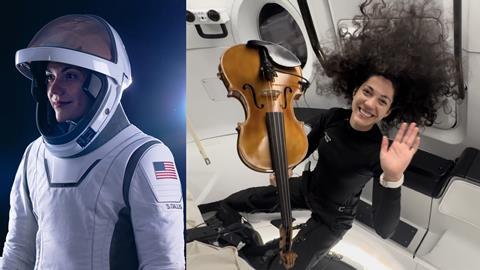
Read more lutherie articles here
In late 2022 an astronaut walked into Robertson & Sons Violin Shop in Albuquerque, New Mexico to look at instruments. Sarah Gillis started playing the violin at an early age, studying first with her violinist/educator mother, Sue Levine, then for many years with American Suzuki pioneer, William Starr, in Boulder, Colorado. While she considered becoming a professional violinist, her career path took a lofty trajectory as she shifted to aerospace engineering at the University of Colorado where former NASA astronaut Joe Tanner, Professor of Aerospace Engineering Sciences, became her mentor. While at CU Gillis started internships with SpaceX and was employed by the company upon graduation. She headed the astronaut training programme as a Lead Space Operations Engineer before becoming an astronaut herself.
In a few short years, Gillis became one of the four SpaceX crew members of the Polaris Dawn rocket which orbited the earth for five days in September 2024. Polaris Dawn reached the highest altitude of any spacecraft in 50 years, orbiting nearly 900 miles above earth. Gillis and Commander Jared Isaacman tested newly designed SpaceX spacesuits on the first commercial spacewalk in history while traveling at 17,500 mph. The crew conducted dozens of scientific research experiments, including the testing of the Starlink laser-based communications system.
Growing up in a home full of music, all the Levine family’s string instruments came from Robertson & Sons Violin Shop. When Gillis came to Robertson’s with her husband Lewis (a fellow aerospace engineer), she told me that she would be playing a violin in space and was looking for the perfect instrument for this mission. She wanted a violin made by Robertson luthier Christian Pedersen, since he had made several of her and her siblings’ instruments growing up. Knowing there was a chance that they would go through several instruments during testing, she settled on one of Pedersen’s workshop models and left with two of his violins and several bows as well as various kinds of rosin and accessories.
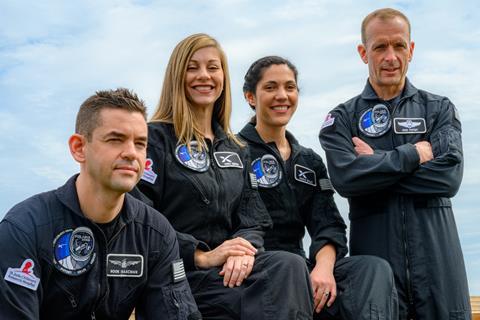
Every piece of equipment aboard any space launch is required to undergo rigorous pre-flight testing and Pedersen’s violins were no exception. Pedersen made sure that all parts of the instruments were safe for testing. The woods, adhesives, varnishes, fittings, strings, bow, hair, rosin and shoulder rest all were subjected to extreme conditions at the SpaceX facility in Los Angeles. To ensure the safety of the astronauts, all the components were ‘baked-out’ in a thermal vacuum chamber at high temperatures to determine if outgassing would pass toxicity requirements. Pedersen and I sent multiple varnish samples and instruments for testing and worked with Gillis to ensure the violin that would meet the material criteria for the mission.
In one email, Gillis stated: ’Sadly, in order to fit the baked-out violin into the analyser, we had to deconstruct it, so that instrument is no longer an instrument.’ After nearly two years of testing and launch delays, the final violin was baked out, packed into the spacecraft and flown to space.
Gillis couldn’t just throw a violin case into the Polaris Dawn capsule. SpaceX designed a special box for the violin, but it did not accommodate the length of a full-size bow. After the engineers unsuccessfully attempted to modify a carbon fibre bow to make it foldable for flight, Gillis solved the issue by taking a 1/4-sized Arcos Brasil carbon fibre bow!
The woods, adhesives, varnishes, fittings, strings, bow, hair, rosin and shoulder rest all were subjected to extreme conditions at the SpaceX facility in Los Angeles
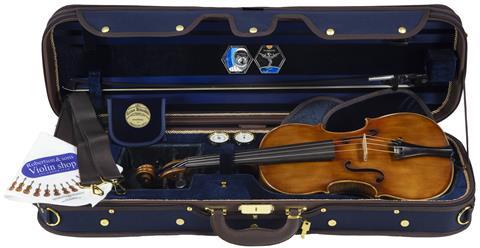
To test the Starlink internet connectivity to Polaris Dawn, the crew wanted to send a meaningful message that would inspire the world. They decided to make full use of Gillis’s violin skills by transmitting her playing from space. On the fourth day of the mission, Gillis performed ’Rey’s Theme’ by John Williams from Star Wars: The Force Awakens with a series of pre-recorded orchestral sessions. The ensembles joining her were professionals (including Williams in Los Angeles) and international El Sistema students from six countries. In zero gravity, the violinist had to stabilise herself using her feet and hold the violin more firmly with her chin to prevent it from sliding around. Bowing required a little added pressure, but she basically played with normal technique.
This resulting 4.5-minute video entitled Harmony of Resilience brings together players from around the world through the universal language of music which symbolises unity and hope. It was produced by House of Paine Entertainment and SpaceX, enabled by the Starlink high-speed internet in space. In an email, Gillis reflected on her performance in this unusual atmosphere:
’Playing in micro-gravity was such a joy. The first time I took the violin out of the case, it was incredibly surreal to see a wooden violin floating in a 21st-century spacecraft. It was absolutely beautiful.’
The SpaceX violin is coming back to Christian Pedersen in Albuquerque for a thorough check-up. Then the violin, with the 1/4-sized bow as well as a full-size bow and case will be auctioned for the benefit of St Jude Children’s Research Hospital.
At age 30, Sarah Gillis is the youngest astronaut ever to complete a spacewalk. Whizzing around the earth in the Polaris Dawn capsule the size of a small bus, her curly long hair floating in the weightless atmosphere, she also played the first violin ever in space. Gillis’s favorite Star Wars character is Rey, and this theme was the perfect choice for this cosmic concert. Robertson & Sons Violin Shop is proud to have been a part of this historic performance!
Watch: Video: First violin performance in space
Read: Bach at 35,000 feet: cellist performs on a Southwest flight
An exclusive range of instrument making posters, books, calendars and information products published by and directly for sale from The Strad.
The Strad’s exclusive instrument posters, most with actual-size photos depicting every nuance of the instrument. Our posters are used by luthiers across the world as models for their own instruments, thanks to the detailed outlines and measurements on the back.
The number one source for a range of books covering making and stringed instruments with commentaries from today’s top instrument experts.
The Canada Council of the Arts’ Musical Instrument Bank is 40 years old in 2025. This year’s calendar celebrates some its treasures, including four instruments by Antonio Stradivari and priceless works by Montagnana, Gagliano, Pressenda and David Tecchler.


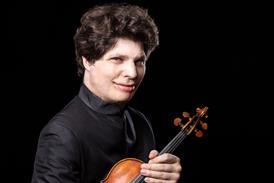

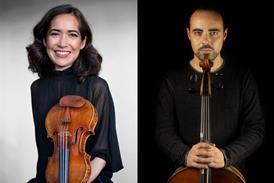




















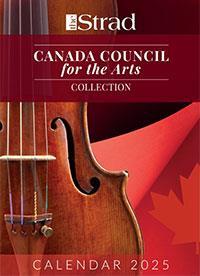































No comments yet